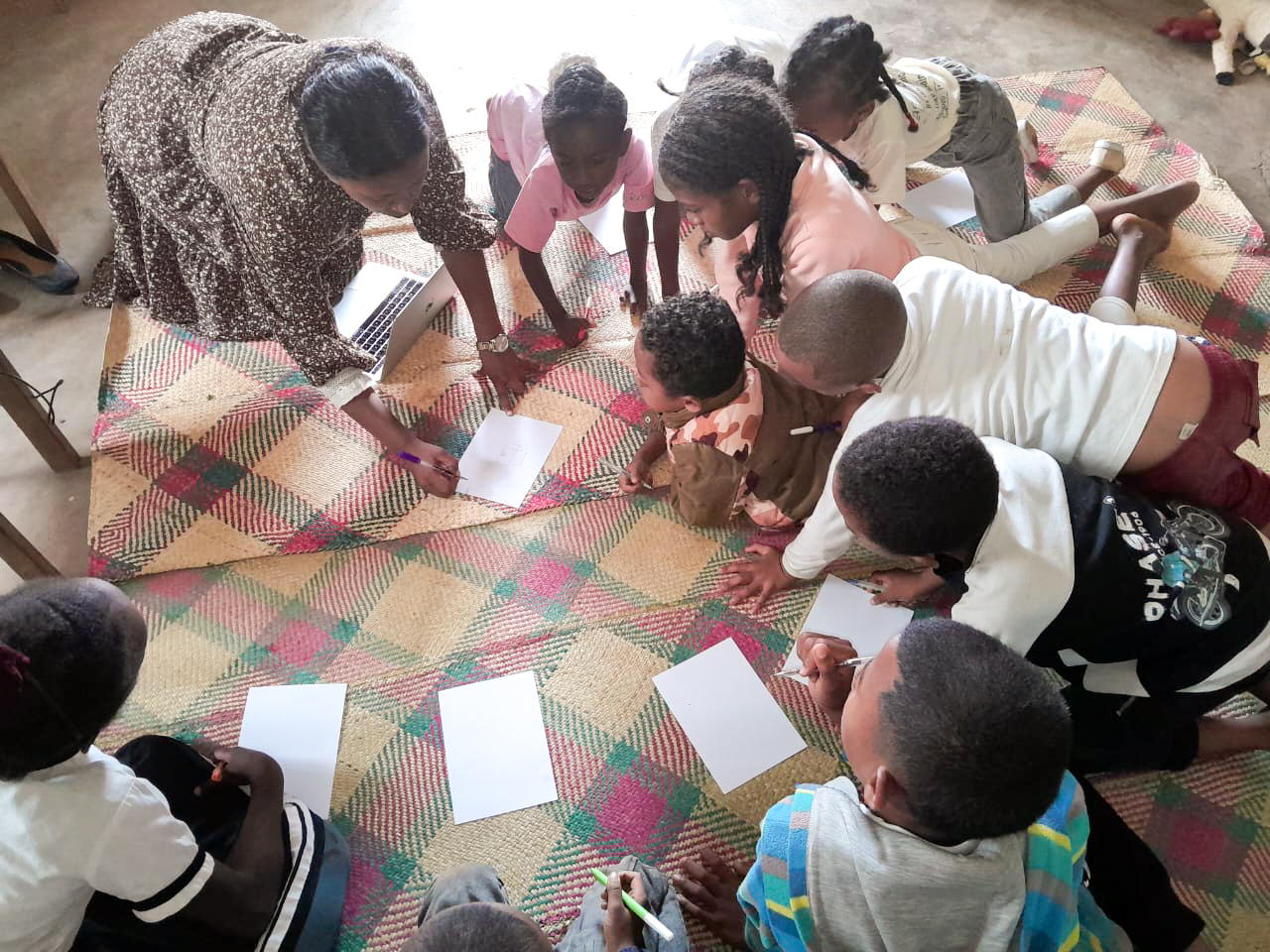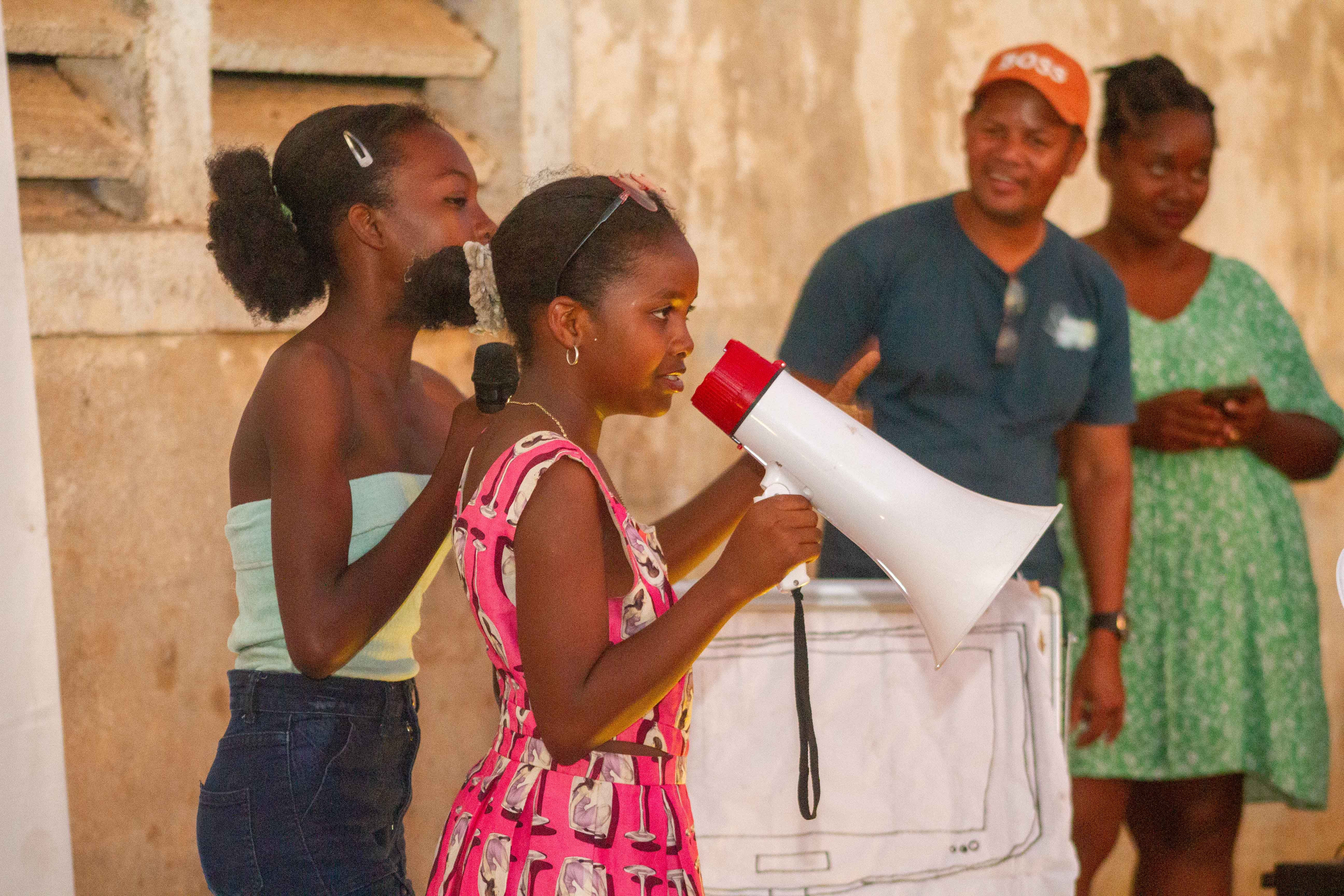Children at the Center of Disaster Preparedness in Madagascar
Address structural inequalities
Build understanding
Collaborative action and investment
Flexible programming and learning
Organization: University of Reading
2025 LOCAL ADAPTATION CHAMPIONS AWARD FINALIST
Every year, powerful cyclones sweep across the island of Madagascar. Floods submerge low-lying regions, and prolonged droughts parch the south, leaving families without food or water.
Children, and their futures, are seriously impacted. Disasters interrupt schooling, damage health systems, and deepen chronic malnutrition. When a cyclone destroys a school, children lose months of education. When drought leaves families without crops, children go hungry. And when disasters trigger epidemics, fragile healthcare systems are quickly overwhelmed, putting young lives at risk.
Traditional disaster preparedness efforts have struggled to keep pace on the Island. Early warning systems exist, but they do not always reach the poorest households, or they sometimes fail to explain in practical terms how to respond. Communities are warned of the danger, but too often don’t have the tools, training, or resources to act effectively. Children, in particular, are rarely included in planning or decision-making. They are seen as victims to be protected, not actors for building resilience.
SAP Kiddo turns a long-standing problem into a groundbreaking opportunity. It places children at the center of disaster preparedness. By transforming early warning systems into child-led, community-driven platforms, SAP Kiddo is proving that children are not only capable of understanding climate risks but also of leading their communities through them.

Early warning systems (EWS) traditionally rely on top-down alerts. Messages broadcast by authorities with little follow-up on what communities should actually do. For many families, those alerts remain abstract or inaccessible.
SAP Kiddo turns this model upside down. By engaging children in the co-creation of preparedness plans, the program transforms warnings into actions that save lives. Children learn through theatre, games, storytelling, and disaster drills how to identify risks, plan escape routes, and guide their communities in times of crisis.
So far, more than 1,000 children have been equipped with the knowledge and confidence to act as resilience leaders in their communities. In one village, what could have been a routine evacuation drill was transformed into an engaging performance, as children used dramatization to bring the procedures to life. In another, young participants mapped their surroundings, identifying flood-prone areas and charting safer routes to higher ground. Across these communities, what once seemed like distant or technical information has become something practical, memorable, and deeply shared.

A Program Rooted in Local Knowledge
SAP Kiddo grew out of participatory action research through a University of Reading project on Resilience and Preparedness to Tropical Cyclones across Southern Africa. It is implemented in partnership with the local NGO ARAKE. From the start, the program has been built not on outside assumptions but on the lived realities of communities. Children, parents, teachers, and local leaders have all been co-researchers, identifying risks, generating data, and designing solutions.
This co-created knowledge is then transformed into culturally meaningful tools—songs, plays, visual maps, and storytelling circles—that resonate with communities. The process not only builds disaster literacy but also strengthens community cohesion, ensuring that preparedness becomes part of everyday life rather than an occasional intervention.
Learning materials are adapted to different abilities and contexts. For children who cannot read, visual aids make complex concepts clear. Local languages ensure accessibility across diverse communities. Tailored content reaches children with vision, hearing, or cognitive impairments. Out-of-school children are engaged in informal settings such as community centers and playgrounds, ensuring that disaster literacy extends beyond classrooms.
Children cannot build resilience alone. SAP Kiddo therefore engages the entire ecosystem around them. Parents and caregivers extend preparedness into homes. Teachers integrate risk education into classrooms and adapt materials for local learning. Community leaders and local authorities ensure that preparedness aligns with broader development priorities.
Children Shaping the Future of Disaster Preparedness and Climate Resilience
From its pilot regions of Vatovavy, Atsimo Andrefana, and Boeny, SAP Kiddo has expanded into Analamanga and Haute Matsiatra. Its national rollout is carefully phased, prioritizing the regions most at risk from recurrent climate hazards. The ambition does not stop at Madagascar’s shores though. There is interest in adapting and replicating the model in other African countries where children face similar climate threats. Ensuring to keep the model child-centered, inclusive and community-drive.
At its heart, SAP Kiddo shows that children are not just vulnerable to the climate crisis, they are vital to solving it. They are mapping risks, designing solutions, comforting their peers, and guiding their communities to safety. They are transforming warnings into action, fear into preparedness, and despair into hope. By investing in them, Madagascar is charting a path toward a future where resilience is grown from within, led by the very children who will inherit the climate-challenged world.